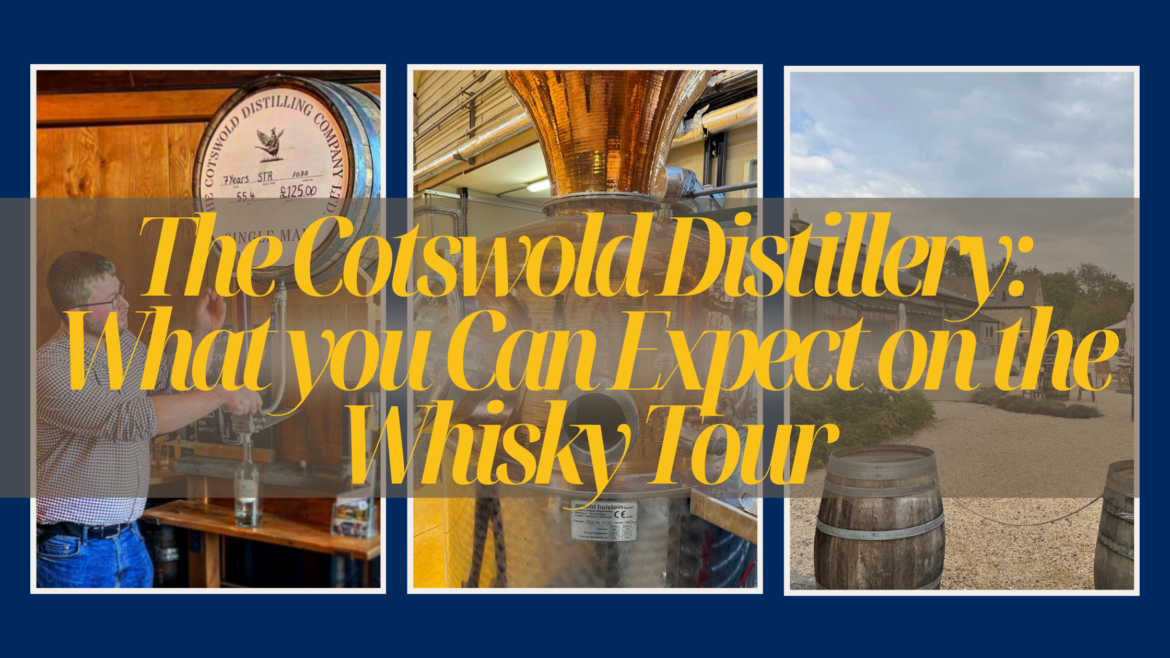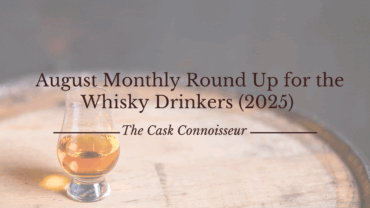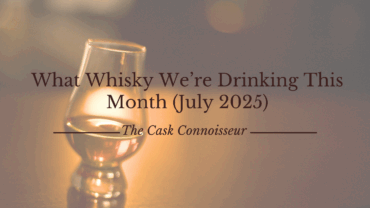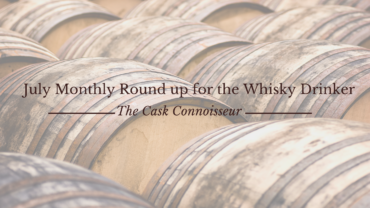At the end of September 2024, Luke and Chris, our Beer and Whisky Connoisseurs, visited The Cotswolds Distillery.
This distillery has been high on their list to visit, since it has won The Cask Connoisseur Award for 2024 (two years in a row)! They are now sharing their experience about the whisky tour that they were able to take part in.
Read on to find out how the Cotswolds Distillery became a prime spot for producing some of the finest English whiskies!
About The Cotswolds Distillery
Daniel Szor, a passionate whisky enthusiast, founded The Cotswolds Distillery in 2014.
This distillery is not just whisky related though! They even deliver their expertise into producing a range of gin for those who require an alternative taste and texture. So the tour will be of interest to both whisky and gin drinkers. Even those uninterested in distilling will find plenty to keep them engaged. For the past two years The Cotswold has come top in our UK and Ireland ranking based.
The Former Distillery at The Cotswolds
Our tour guide for our adventure was Dean, he was very knowledgeable and passionate about the industry. Dean, firstly took us into the former distillery. This was the initial location of the Cotswolds Distillery when it opened in July 2014.
The room itself had a variety of different pieces of equipment which all did different tasks. First, Dean took us over to a small copper pot still, named Dolly. They named the copper still Dolly because it worked from 9 to 5, inspired by the song. Dolly distills gin and plays a crucial role in producing Cotswolds Dry Gin. This copper still holds a capacity of 500 litres of liquid. In hindsight this allowed the distillery to produce around 350 bottles of Cotswolds gin.
The next piece of equipment we saw was the milling machine, this is where the start of making whisky happens. The milling machine grinds the Malted barley malted barley into grist before it reaches the mash tun. Further, unlike the new distillery, the old distillery didn’t have the required space for a grist bin.
Located on the top floor on the right hand side was the mash tun. The mash tun mashes the grist with hot liquor water to create a mixture called wort. Once the wort forms, Dean explains that the next step involves a steel washback. There were eight steel washbacks located in the middle of the distillery. Each steelback can hold up to 2 ‘500 litres of wort.
Dean then spoke about Fermentation, this process can take around 90 hours to complete. The excitement starts here as the addition of yeast to the wort produces alcohol.
Once fermentation finishes, the double distilling process begins. This was an iconic view for us. There were two gigantic copper pot stills which both had two different purposes.
The fermentation produces wash, which the team then transfers into Mary, named after the hit song “Proud Mary”. The team boils the wash for several hours, resulting in a new mixture called low wines. When we asked Dean why they don’t use all the low wines to create whisky, he explained that they only transfer the “heart” into the spirit still called Janis, while they recycle the other parts (head and tail).
The old distillery is only used for experimental purposes now, and a newer distillery was built and started production in 2016.
The New Distillery at The Cotswolds
After finishing our tour of the former distillery, we headed to new distillery. It was very exciting for us both when Dean slowly opened up the roller door. We felt like children arriving at the local sweet shop.
The new distillery looked almost identical to the former building. But it was on a much larger scale and the equipment looked more modern. Staring right into your eyes lay the two gigantic copper pot stills.
Due to space, the former distillery had no grist bin. This is why the new distillery includes the necessary space for installation. Located below the steps which took you onto the higher floor was the milling machine.
As we made our way upstairs, we came across the mash tun. This has a capacity of 10 ‘000 litres of wort. Due to the larger mash tun the mashing process can take anywhere up to 6 hours to complete.
Next to the mash tun sits the underback. Dean explained that once they establish wort, the liquid travels through the underback before moving into the fermenting vessel. After fermentation, they transport the newly made wash into a wash preheating tank. This holds up to 10′ 000 litres.
The Cotswolds Distillery was able to play an important role when it comes to being environmentally friendly. Once the wash has finished heating, the piping hot liquid called ‘pot ale’ remains in the tank. They recycle this for the next distillation. The team sends the necessary parts of the wash to the sub-coolers to chill them for the first still.
The wash still named Rosie takes 10 ‘000 litres. Once the wash reaches 20-25% ABV it then travels along into the spirit still. This is the final journey before it reaches the barrel.
Fanny, being the spirit still, makes sure the whisky reaches the appropriate alcohol content of around 63% ABV. Dean briefly mentioned that there are three key words to know what fraction of the liquid is “good” or “bad”.
Hearts, referred to the liquid which would be transported into barrels to settle. Foreshots and Feints are recycled back and reused again for the next distillation.
The showcase of the room was the spirit safe, a glass container which shows the wash going through different tubes. This is so that the liquid can be safely transferred from the wash still to the spirit still. It was an exciting piece of equipment, but certainly something not to take your eyes off when making whisky.
After spending a good 40 minutes inside the new distillery, it was time to move onto the Cask Room.
Enjoying The Cask Warehouse at The Cotswolds Distillery
The cask Warehouse was an amazing room to feast our eyes on inside. There were so many varieties of casks, but there was one which Dean bought our attention to. Next to the main door, lay a cask which had a see-through end so that the public can look inside.
The two main cask types used were Ex-Bourbon and red wine casks. It was then noted on the top shelf lay whisky barrels which individual customers have bought from the distillery.
The Tasting Room at The Cotswolds Distillery
The final stop was the Tasting Room. The room was warm, inviting and friendly. It was furnished in a rustic Cotswold style that we found very comfortable. It was very conducive for the ensuing tasting.
At the further end of the room lay a small bar. This showcased all of the gin and whiskies that the distillery produced, it was a fabulous site to visualise.
The Cotswolds Distillery Visitor Centre
To conclude the tour Dean brought us back to the Visitor Centre. A small shop stocked full of Cotswold Distillery goodies stood nearby.
We really loved the fill your own bottle, we just couldn’t resist doing this. Watching the whisky fill the bottle was so satisfying. The price of the fill your own bottle was £125.00 for a 7 year old whisky from an STR cask. Chris said it was his favourite on the day! Okay, it was £125, a similar price to other distillery’s BYO, but well worth it.
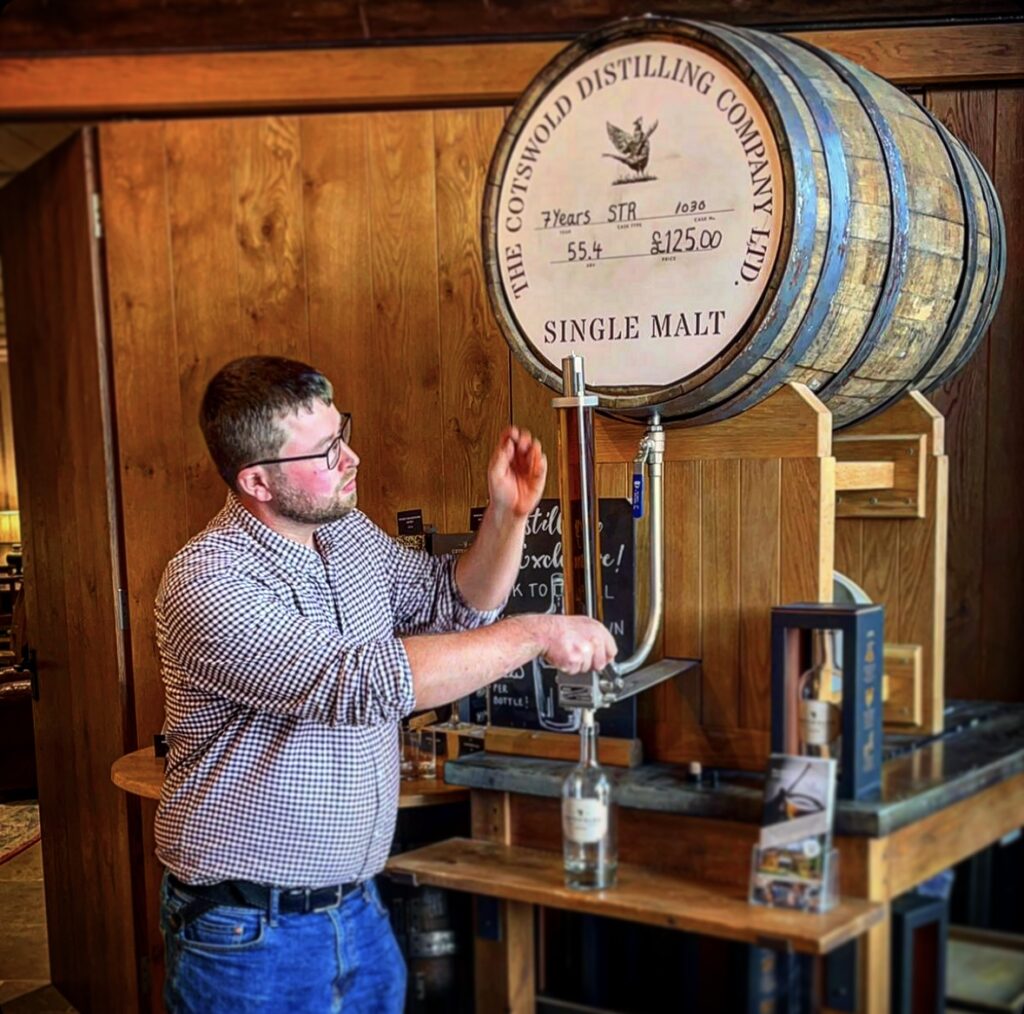
Final Thoughts on the Whisky Tour at The Cotswolds Distillery
This was a fantastic tour, we both really enjoyed visiting The Cotswold Distillery. It showed how their impeccable whisky is made. The tour being priced at £25.00 per person is a real bargain. Particularly considering the knowledge gained, amiability and generosity of our hosts.
The only thing missing, there was not much time on the tour to look at some of the equipment properly. We did gain a greater and more in depth understanding of how some of the distilling equipment works. But maybe that is addressed in the Whisky Blending Masterclass where maybe there’s more time to look? However, the tasting room does make up for this and it ends your visit on a high.
Overall, we highly recommend!


